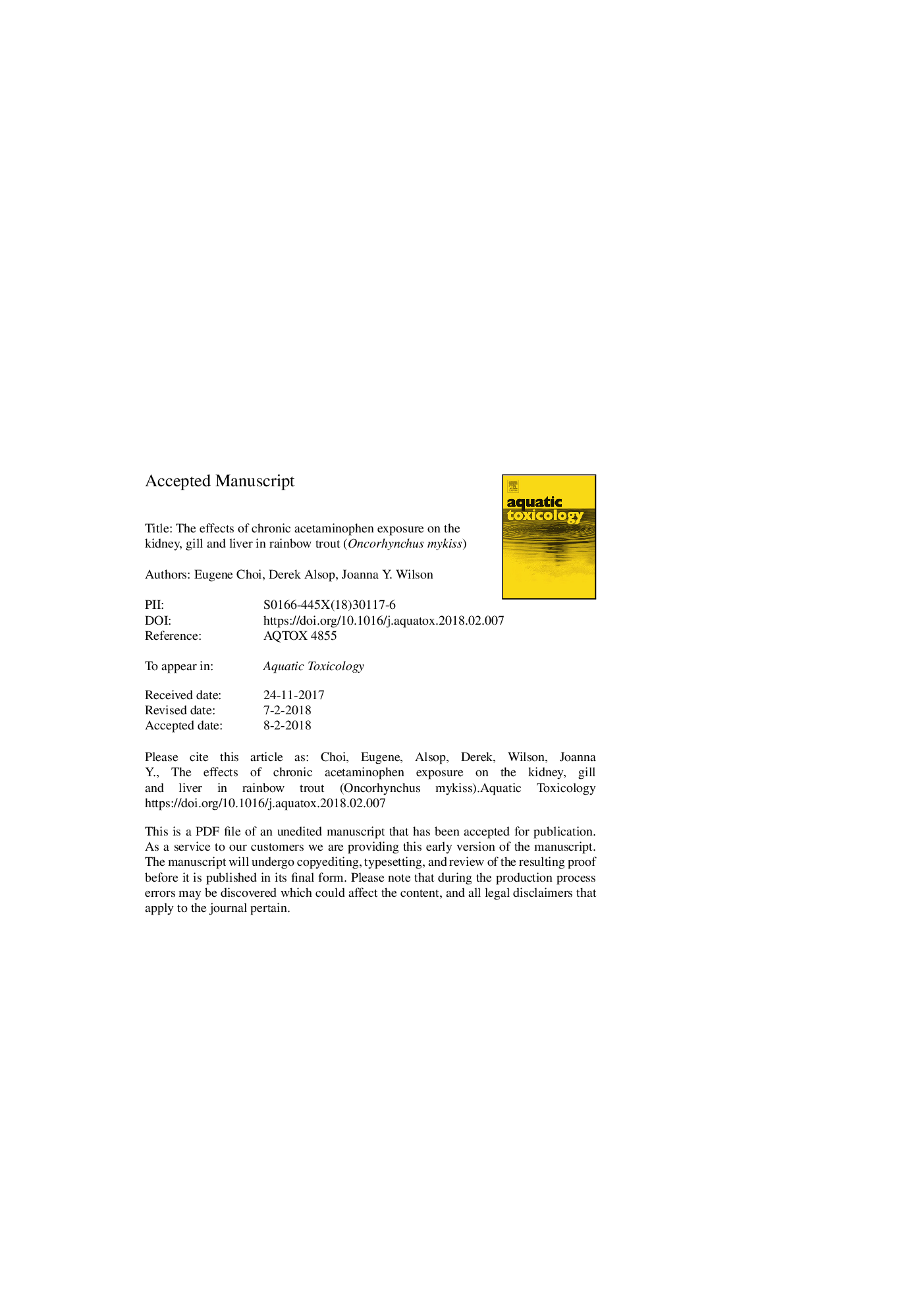| Article ID | Journal | Published Year | Pages | File Type |
|---|---|---|---|---|
| 8883769 | Aquatic Toxicology | 2018 | 38 Pages |
Abstract
In this study, we examined if rainbow trout chronically exposed to acetaminophen (10 and 30â¯Î¼gLâ1) showed histological changes that coincided with functional changes in the kidney, gill and liver. Histological changes in the kidney included movement and loss of nuclei, non-uniform nuclei size, non-uniform cytoplasmic staining, and loss of tubule integrity. Histological effects were more severe at the higher concentration and coincided with concentration dependent increases in urine flow rate and increased urinary concentrations of sodium, chloride, potassium, calcium, urea, ammonia, glucose, and protein. Yet, glomerular filtration rate was not altered with acetaminophen exposure. In the gill, filament end swelling, whole filament swelling, and swelling of the lamellae were observed in exposed fish. Lamellar spacing decreased in both exposure groups, but lamellar area decreased only with 30â¯Î¼gLâ1 exposure. At faster swimming speeds, oxygen consumption was limited in acetaminophen exposed fish, and critical swimming speed was also decreased in both exposure groups. The liver showed decreased perisinusoidal spaces at 10 and 30â¯Î¼gLâ1 acetaminophen, and decreased cytoplasmic vacuolation with 30â¯Î¼gLâ1 acetaminophen. A decrease in liver glycogen was also observed at 30â¯Î¼gLâ1. There was no change in plasma concentrations of sodium, chloride, potassium, calcium, magnesium, and glucose with exposure, suggesting compensation for urinary loss. Indeed, an increase in Na+-K+-ATPase activity in the gills was found with 30â¯Î¼gLâ1 acetaminophen exposure. Chronic exposure of rainbow trout to the environmentally relevant pharmaceutical acetaminophen, alters both histology and function of organs responsible for ion and nutrient homeostasis.
Related Topics
Life Sciences
Agricultural and Biological Sciences
Aquatic Science
Authors
Eugene Choi, Derek Alsop, Joanna Y. Wilson,
